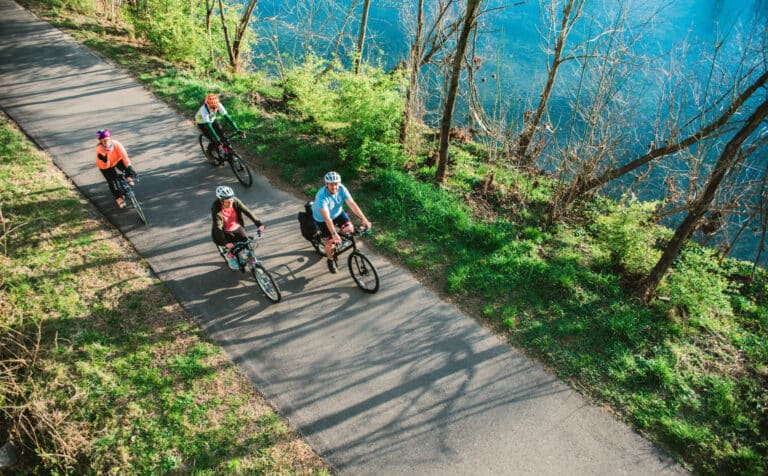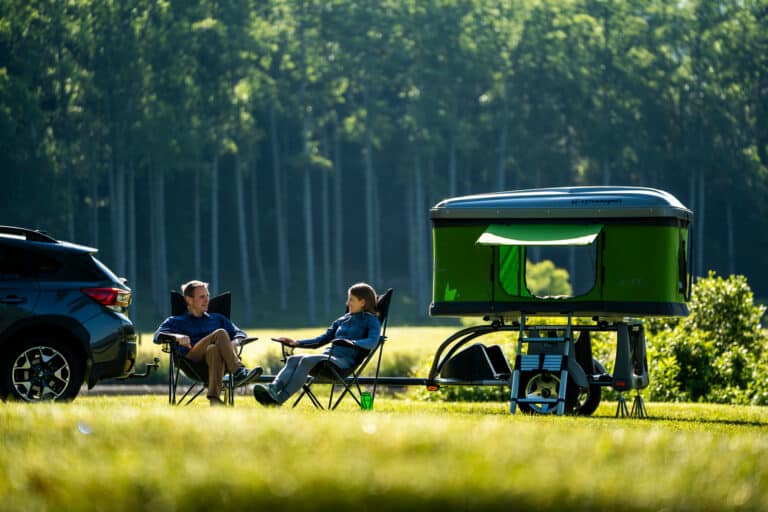Dear EarthTalk: I’ve noticed that bamboo is very trendy right now, apparently—in part—for environmental reasons. Can you enlighten? — Eric M., via e-mail
 Bamboo has a long history of economic and cultural significance, primarily in East Asia and South East Asia where it has been used for centuries for everything from building material to food to medicine. There are some 1,000 different species of bamboo growing in very diverse climates throughout the world, including the southeastern United States.
Bamboo has a long history of economic and cultural significance, primarily in East Asia and South East Asia where it has been used for centuries for everything from building material to food to medicine. There are some 1,000 different species of bamboo growing in very diverse climates throughout the world, including the southeastern United States.
Bamboo’s environmental benefits arise largely out of its ability to grow quickly—in some cases three to four feet per day—without the need for fertilizers, pesticides or much water. Bamboo also spreads easily with little or no care. In addition, a bamboo grove releases some 35 percent more oxygen into the air than a similar-sized stand of trees, and it matures (and can be replanted) within seven years (compared to 30-50 years for a stand of trees), helping to improve soil conditions and prevent erosion along the way. Bamboo is so fast-growing that it can yield 20 times more timber than trees on the same area.
Today, heightened consumer environmental awareness has given sales of bamboo flooring, clothing, building materials and other items a huge boost.
As an attractive and sturdy alternative to hardwood flooring, bamboo is tough to beat. According to Pacific Northwest green building supplier Ecohaus, bamboo—one of the firm’s top selling flooring options—is harder, more moisture resistant and more stable than even oak hardwoods. Ecohaus carries both the EcoTimber and Teragren brands of bamboo, and ships worldwide.
Bamboo is also making waves in the clothing industry as an eco-chic and functional new fabric. Softer than cotton and with a texture more akin to silk or cashmere, bamboo clothes naturally draw moisture away from the skin, so it’s great for hot weather or for sweaty workouts. It also dries in about half the time as cotton clothing.
Some critics point out that the process of converting bamboo to fabric can take a heavy environmental toll, with the most cost-effective and widespread method involving a harsh chemical-based hydrolysis-alkalization process followed by multi-phase bleaching. The Green Guide counters, though, that bamboo still has a much lower environmental impact than pesticide-laden conventional cotton and petroleum-derived nylon and polyester fabrics. Consumers interested in trying out bamboo clothing should look for the Bamboosa and EcoDesignz labels, two of the leaders in the fast-growing sector of green fashion.
Bamboo is also making inroads into the paper industry, though there are fears that too fast a transition there would threaten ecologically diverse bamboo forests across Southeast Asia and elsewhere. The Earth Island Institute, among other groups concerned about forest loss due to paper consumption, would instead like to see more research into using agricultural waste to make paper instead of wood pulp or bamboo. Regardless, bamboo in all its forms might one day soon be one of the most important plants in the world.
CONTACTS: Ecohaus, www.ecohaus.com; The Green Guide, www.thegreenguide.com; Bamboosa, www.bamboosa.com; EcoDesignz, www.ecodesignz.com; Earth Island Institute, www.earthisland.org.
GOT AN ENVIRONMENTAL QUESTION? Send it to: EarthTalk, c/o E/The Environmental Magazine, P.O. Box 5098, Westport, CT 06881; submit it at: www.emagazine.com/earthtalk/thisweek/, or e-mail: [email protected]. Read past columns at: www.emagazine.com/earthtalk/archives.php.








